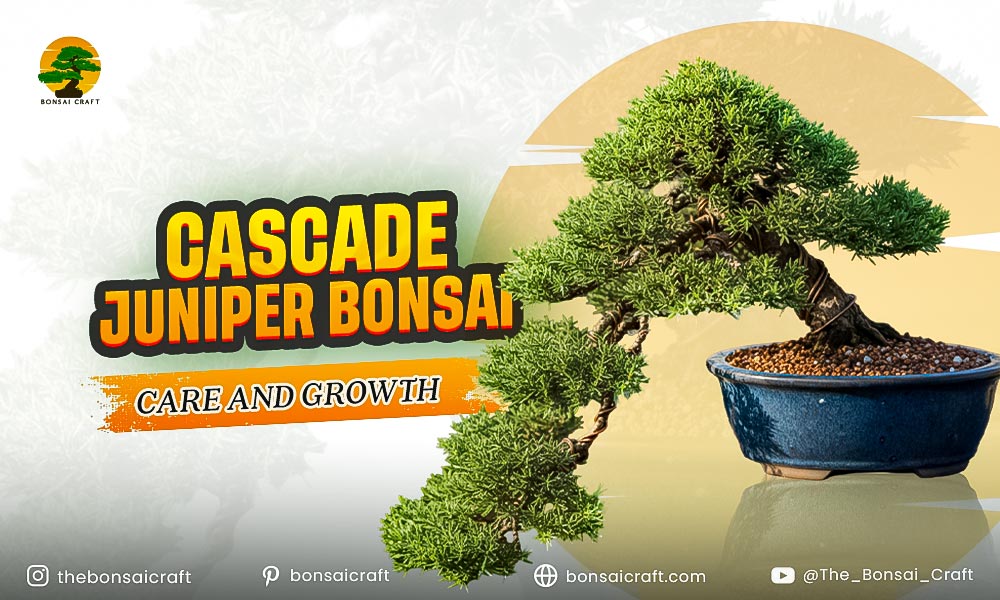
The cascade juniper bonsai is one of the most dramatic and elegant bonsai styles. Its flowing branches resemble a tree clinging to the side of a mountain, bending gracefully downward under the weight of snow, wind, or time. For bonsai enthusiasts, mastering the juniper bonsai cascade style is both an artistic challenge and a rewarding journey.
As an experienced bonsai grower and researcher, I’ll guide you through everything you need to know about cascade juniper bonsai care and growth—from styling and pruning to watering and seasonal maintenance. Whether you’re working on a semi cascade juniper bonsai or a full bonsai cascade juniper, this article provides expert, trustworthy, and practical advice.
Why Choose a Cascade Juniper Bonsai?
The cascade bonsai juniper style, known as Kengai in Japanese, mimics trees that grow on cliffs or riverbanks. Harsh weather forces them downward, creating a natural cascading effect.
Key Reasons to Choose This Style:
- Visual impact: The downward flow contrasts beautifully with upright bonsai styles.
- Symbolism: Represents resilience, balance, and survival.
- Challenge: A perfect choice for growers seeking advanced artistic expression.
- Junipers adapt well: Cascade juniper bonsai trees are hardy, drought-tolerant, and responsive to shaping techniques.
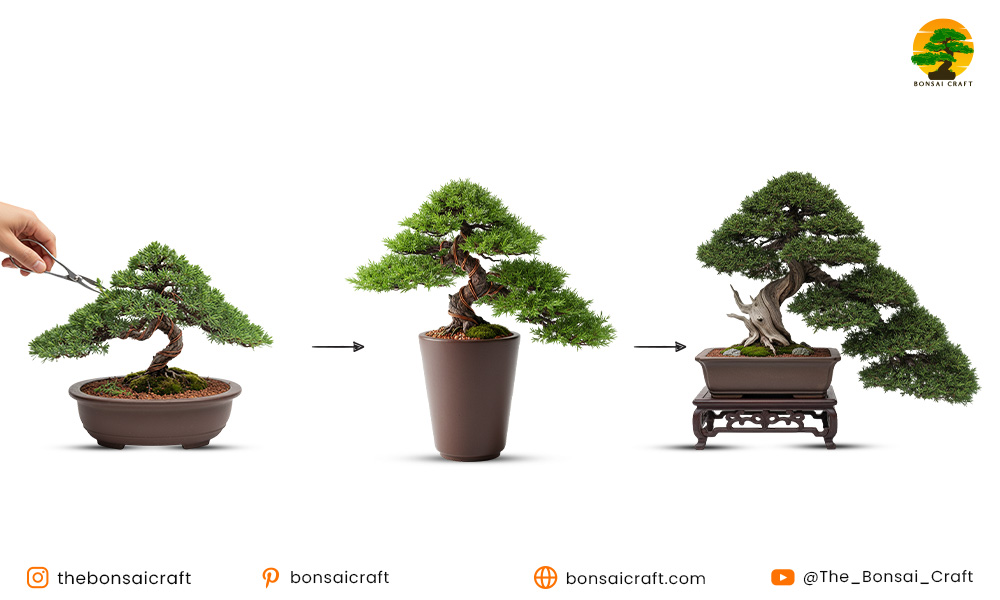
Cascade Juniper Bonsai Styles
There are two primary variations of juniper bonsai cascade styles:
1. Full Cascade (Kengai)
- The trunk bends sharply downward, extending below the base of the pot.
- The cascade juniper bonsai tree flows elegantly, almost touching the stand.
- Symbolizes trees that grow on steep cliffs, battered by nature.
2. Semi-Cascade (Han-Kengai)
- The trunk bends outward and downward, but only drops slightly below the rim of the pot.
- Ideal for beginners experimenting with juniper semi cascade bonsai.
- Represents trees growing near rivers or slopes where growth is less extreme.
Both styles highlight the adaptability and strength of nature while offering bonsai artists a wide canvas for creativity.
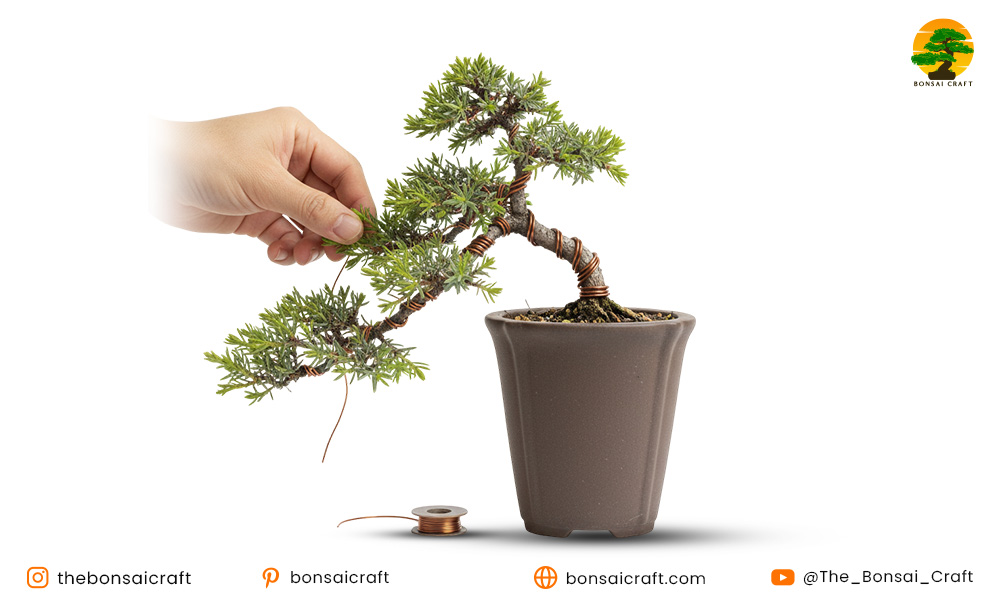
How to Style a Cascade Juniper Bonsai
Shaping a juniper cascade bonsai requires vision, patience, and proper tools.
Steps to Achieve Cascade Styling:
- Choose the right tree
Start with a healthy juniper bonsai cascade candidate with flexible young branches. - Select a cascade pot
Use a deep, narrow pot for full cascade or a slightly shallower one for semi-cascade. - Determine the cascade line
Identify the trunk section that will bend downward. This becomes the flow of the cascade. - Wiring the trunk
- Wrap copper or aluminum wire around the trunk.
- Gently bend it downward to create the cascading effect.
- Avoid sudden, sharp bends to prevent breaking.
- Pruning and branch selection
- Remove upward-growing branches that disrupt the flow.
- Keep a few side branches for balance and proportion.
- Refinement
- Maintain an apex near the base of the cascade to create visual harmony.
- Style foliage pads for depth and natural appearance.
👉 Tip: Always wire and bend gradually, giving the tree time to adapt. Overforcing may cause damage.
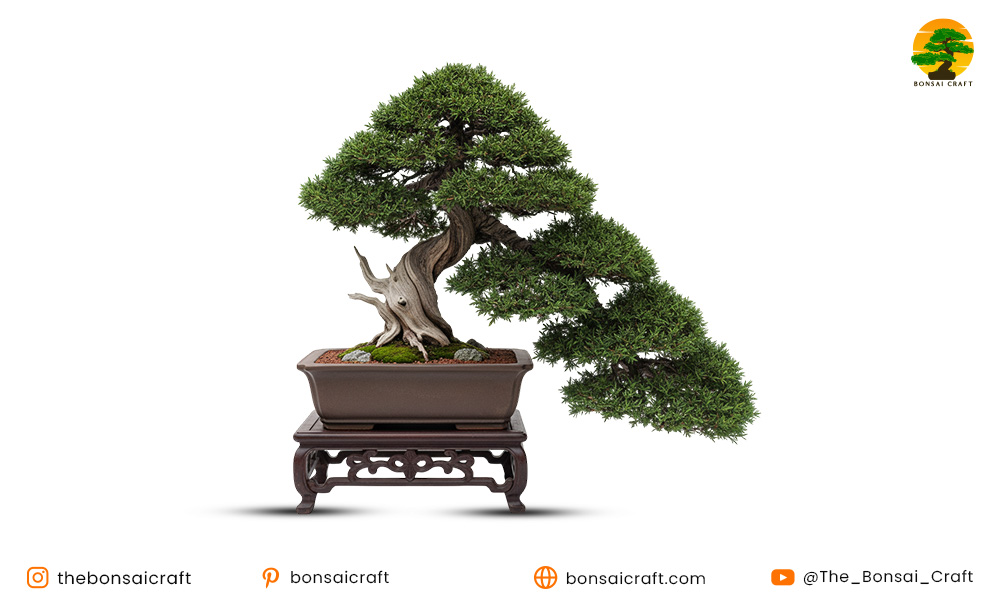
Cascade Juniper Bonsai Care Guide
Once styled, proper care ensures healthy growth and long-lasting beauty.
1. Light Requirements
- Juniper cascade bonsai trees thrive in full sun.
- Place outdoors where they receive 5–7 hours of direct sunlight.
- In hot climates, provide afternoon shade to prevent leaf burn.
2. Watering
- Water thoroughly when the soil surface begins to dry.
- Ensure proper drainage—junipers dislike soggy roots.
- Mist foliage occasionally to prevent spider mites.
3. Soil
- Use a well-draining bonsai mix: akadama, pumice, and lava rock.
- Avoid heavy organic soil that retains excess water.
4. Fertilizing
- Apply balanced bonsai fertilizer every 2–3 weeks during the growing season (spring to autumn).
- Reduce feeding in winter when growth slows.
5. Pruning
- Regularly pinch back new growth to maintain the cascade shape.
- Avoid heavy pruning during late summer to prevent stress.
- Deadwood features (jin and shari) enhance dramatic styling.
6. Repotting
- Repot every 2–3 years for young trees, 4–5 years for mature ones.
- Tilt root mass to support downward growth.
- Trim roots carefully—do not remove more than one-third.
7. Winter Care
- Protect from freezing winds by placing in a cold frame or unheated greenhouse.
- Do not keep indoors long-term; junipers need winter dormancy.
Common Problems with Cascade Juniper Bonsai
Even well-cared-for bonsai cascade junipers may face issues:
- Pest infestations: Spider mites, scale, and aphids.
- Root rot: Caused by poor drainage or overwatering.
- Weak foliage: Usually from insufficient sunlight.
- Wire scars: If wiring is left on too long.
👉 Solution: Inspect regularly, maintain airflow, and adjust care seasonally.
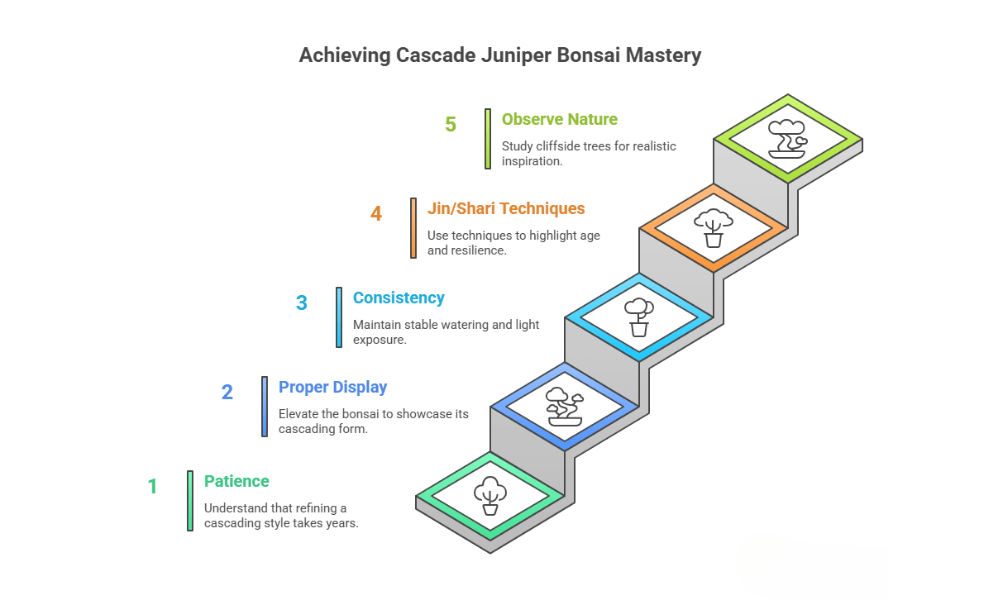
Expert Tips for Growing a Cascade Juniper Bonsai Tree
- Patience pays off: Cascading styles take years to refine.
- Display properly: Elevate on a stand so the cascade flows naturally below pot level.
- Consistency: Watering and light exposure should remain stable.
- Use jin/shari techniques: Highlight age and resilience.
- Observe nature: Study cliffside trees for realistic inspiration.
Conclusion
The cascade juniper bonsai is not just a tree; it’s living art that reflects endurance, grace, and balance. Mastering the juniper bonsai cascade style requires patience, but the reward is a bonsai that captivates with its flowing elegance.
As an experienced bonsai enthusiast, I recommend starting with a semi cascade juniper bonsai before advancing to full cascades. With proper cascade juniper bonsai care and growth practices, your tree will thrive for decades, becoming a symbol of strength and beauty.
FAQs on Cascade Juniper Bonsai
What is a cascade juniper bonsai?
A cascade juniper bonsai is a bonsai styled to flow downward, resembling trees that grow on cliffsides. It symbolizes resilience and survival under harsh conditions, making it one of the most artistic bonsai forms.
How do you care for a juniper cascade bonsai?
To care for a juniper cascade bonsai, provide full sun, water when the soil dries slightly, and use well-draining soil. Fertilize during the growing season and protect from extreme cold in winter. Regular pruning and wiring maintain its cascading shape.
What is the difference between cascade and semi-cascade juniper bonsai?
A cascade juniper bonsai flows below the pot’s base, while a semi-cascade juniper bonsai bends slightly downward but stops just below the rim. Both are beautiful but vary in difficulty and visual impact.
How often should I repot a cascade juniper bonsai tree?
Repot a cascade juniper bonsai tree every 2–3 years if young, or every 4–5 years if mature. Use well-draining bonsai soil and trim roots carefully, avoiding excessive removal that could stress the tree.
Can a beginner grow a cascade juniper bonsai?
Yes, beginners can start with a juniper semi cascade bonsai since it’s easier to style and maintain. Full cascades are more advanced and require experience in wiring, pruning, and display techniques.
